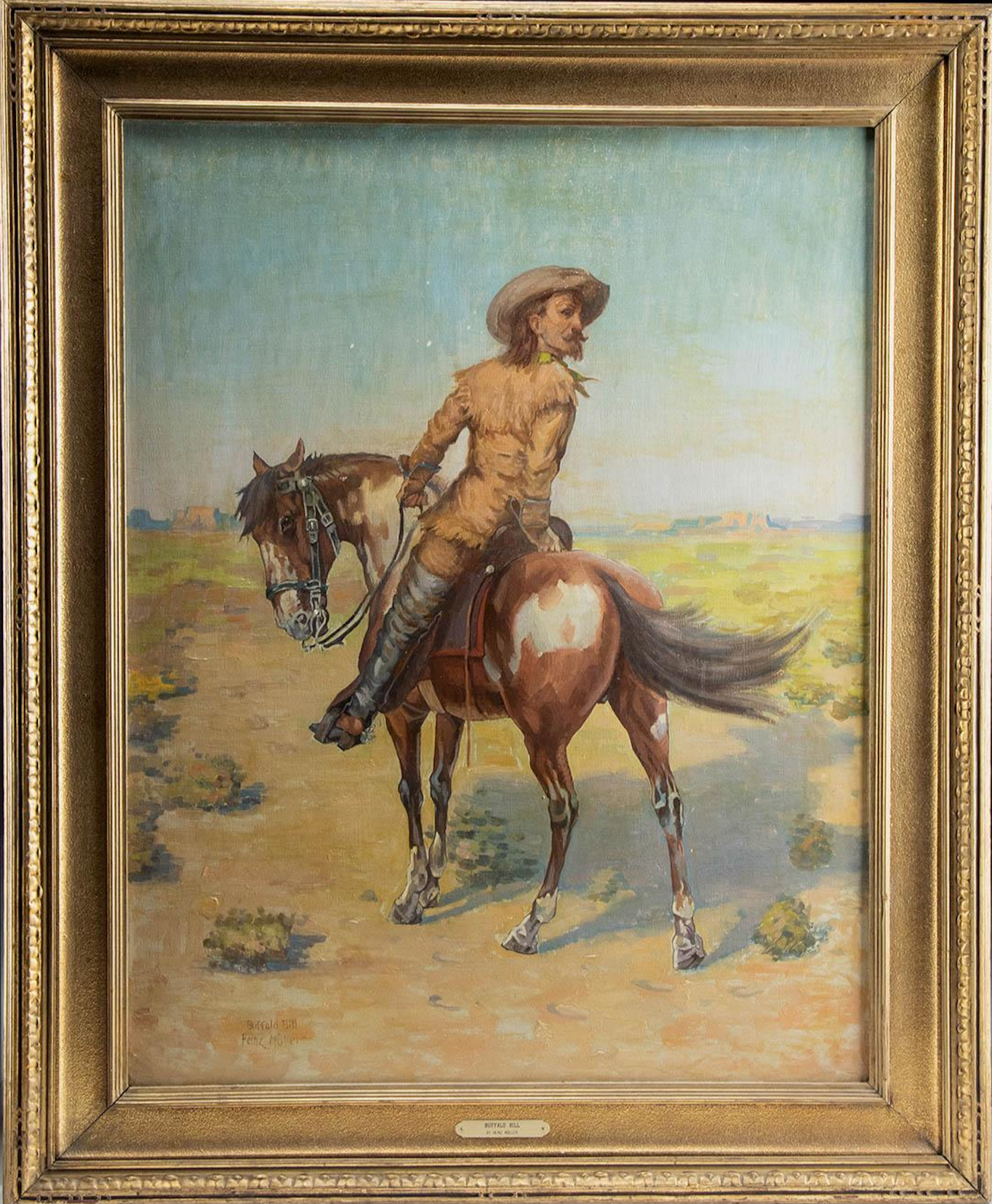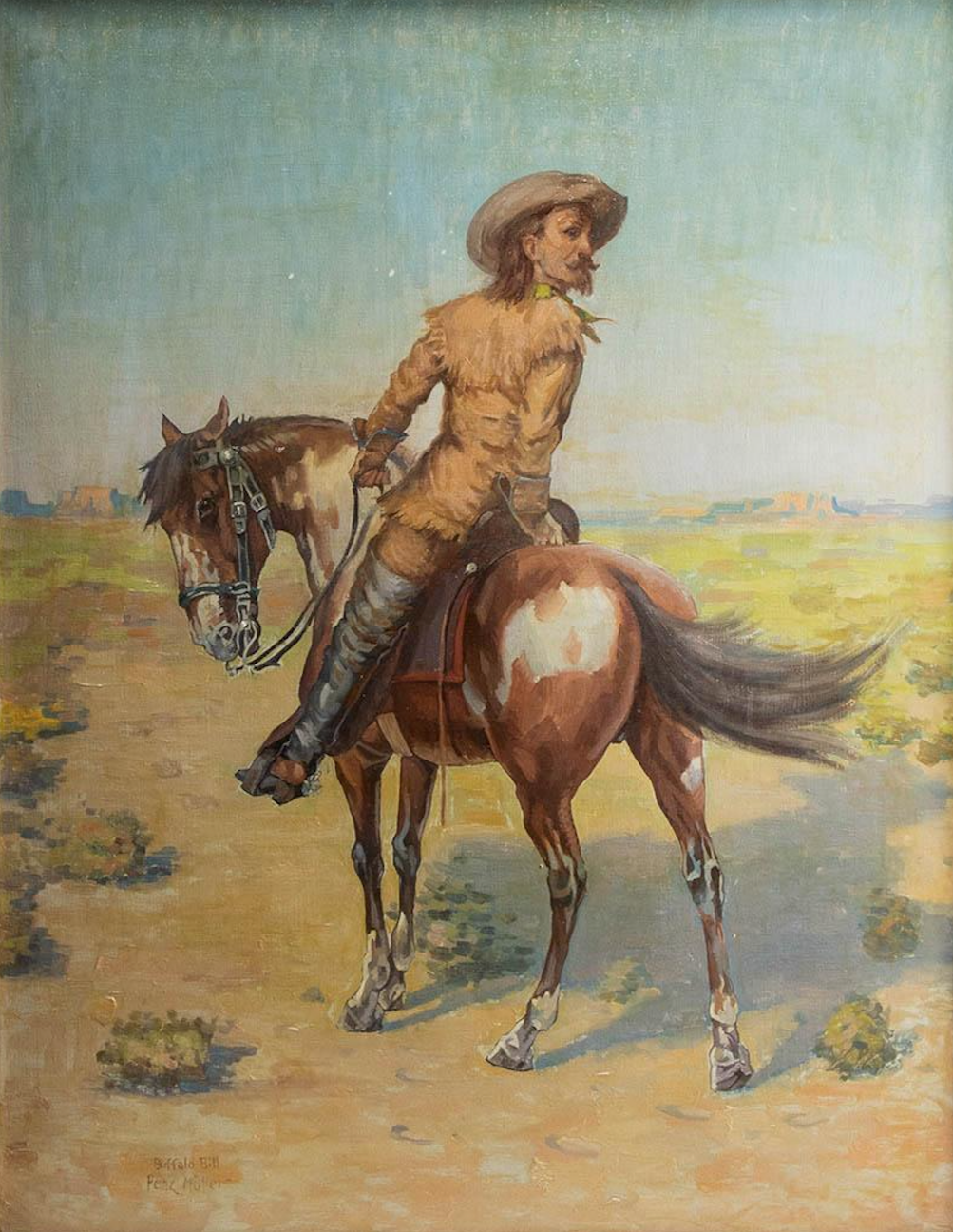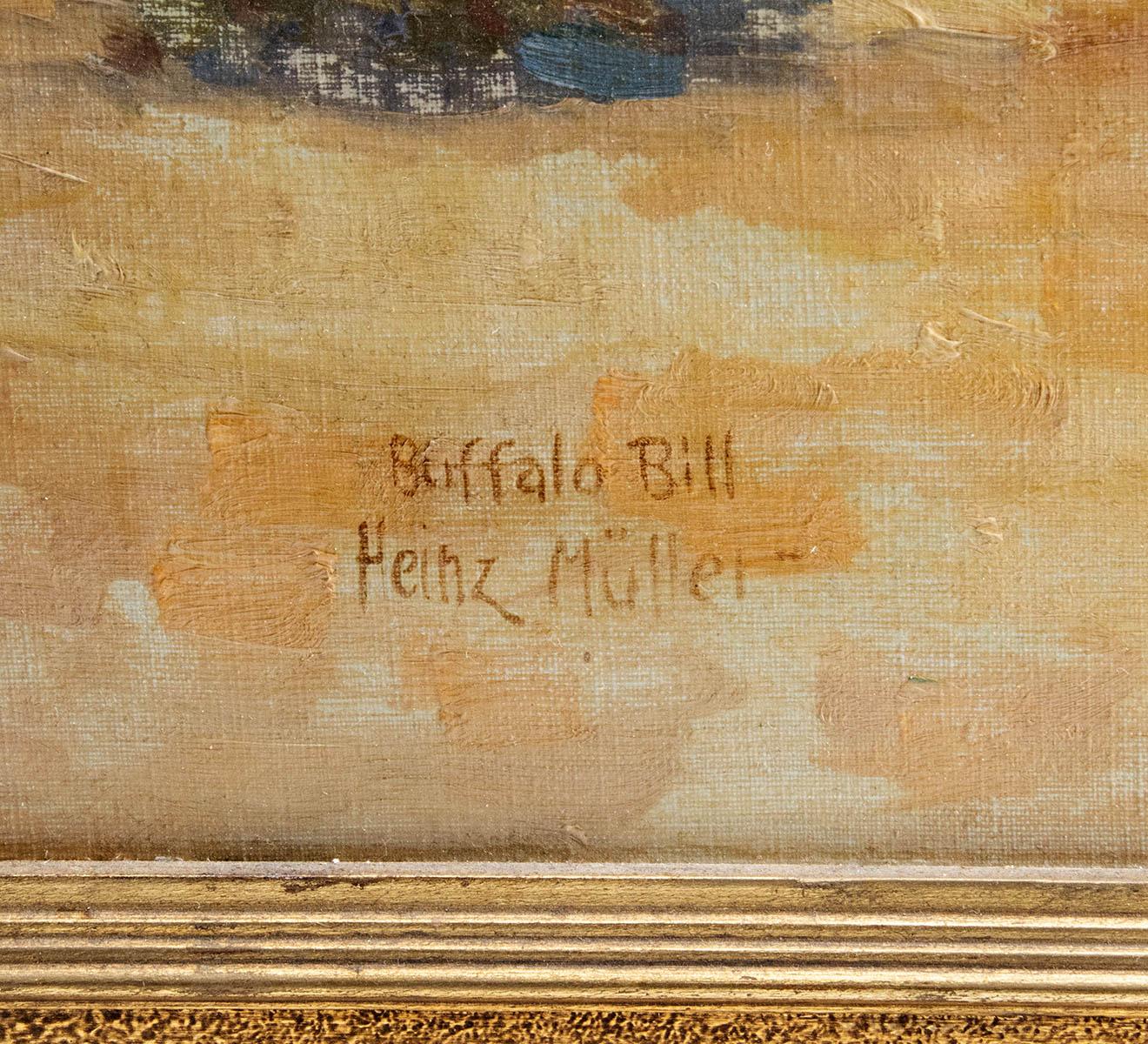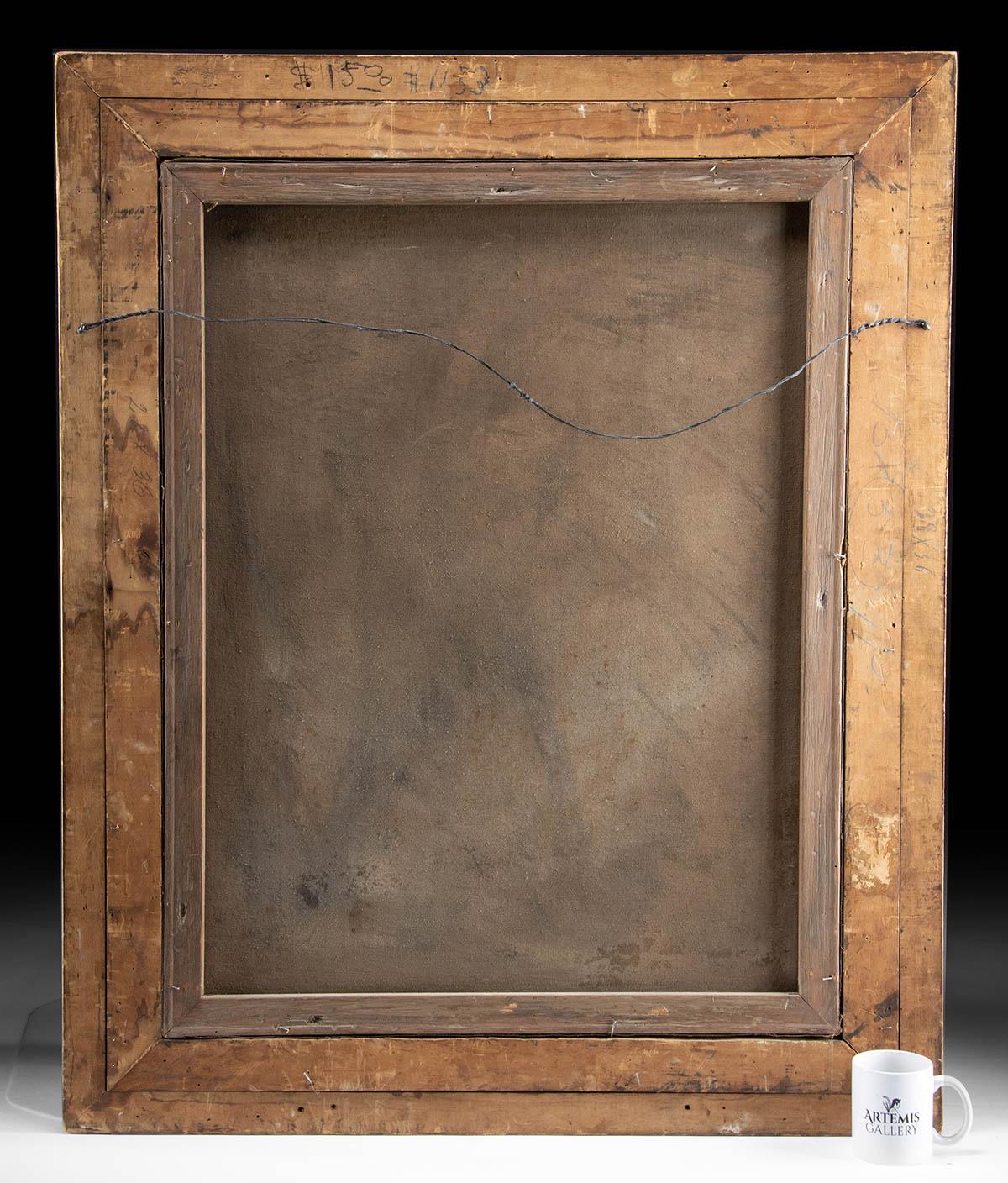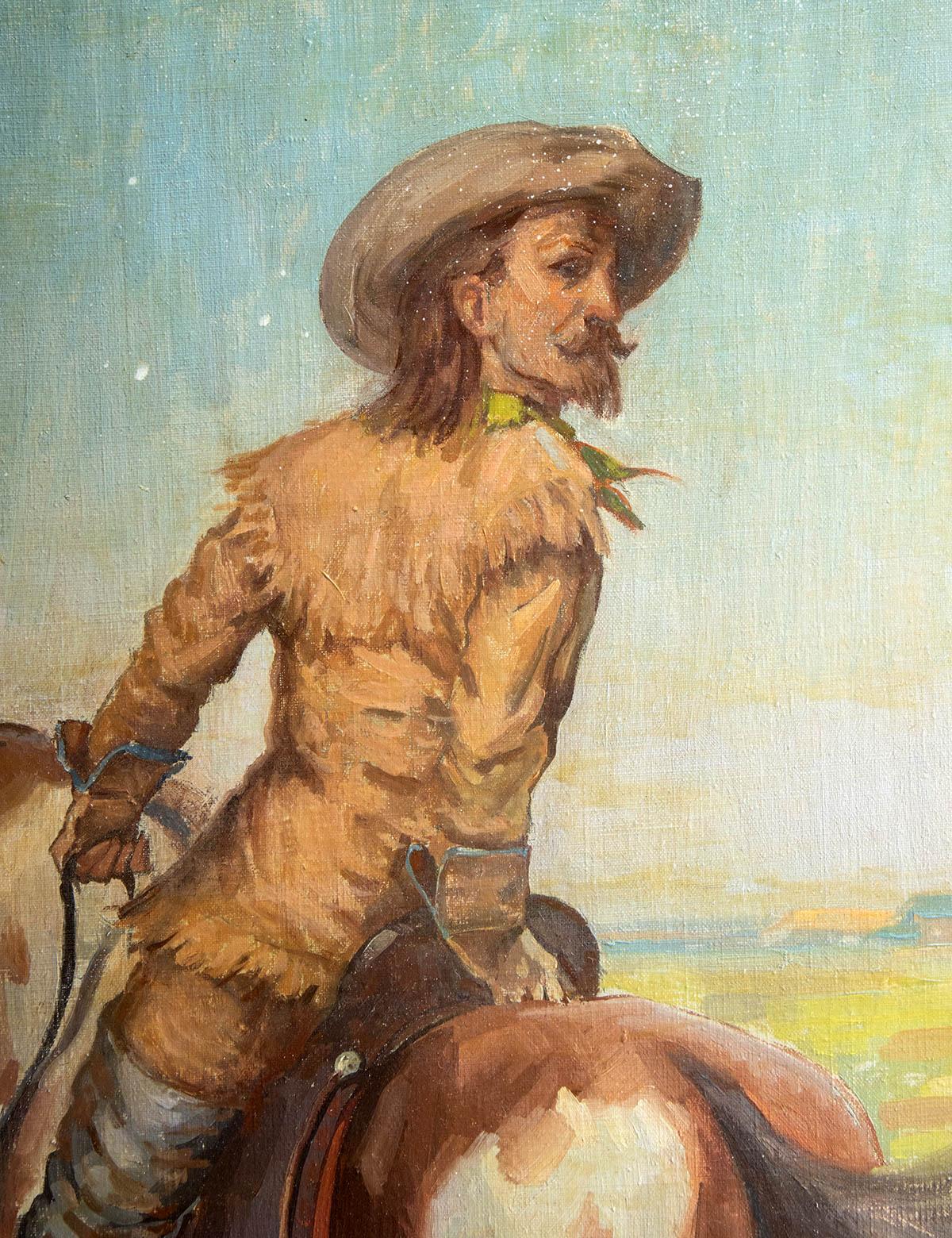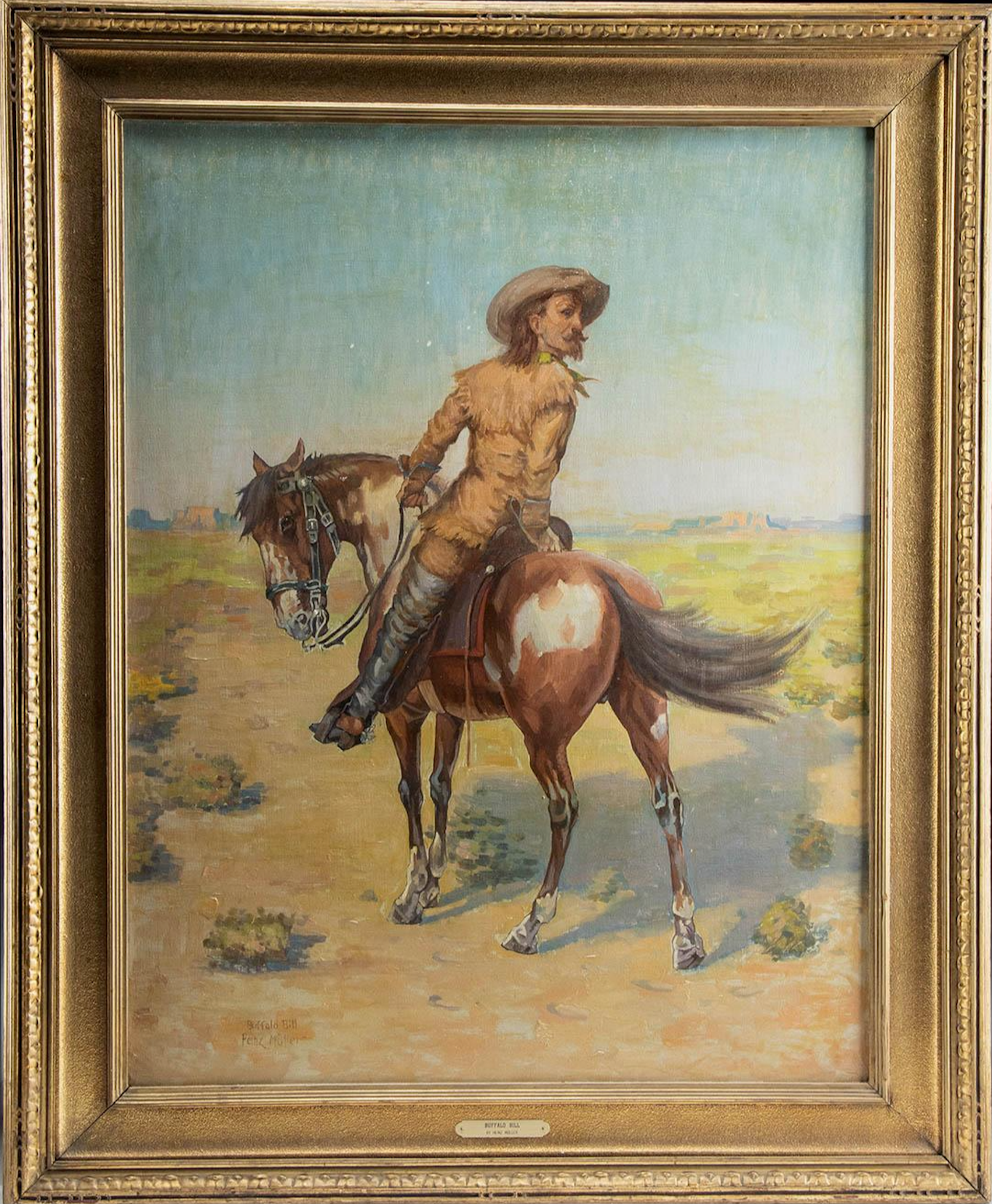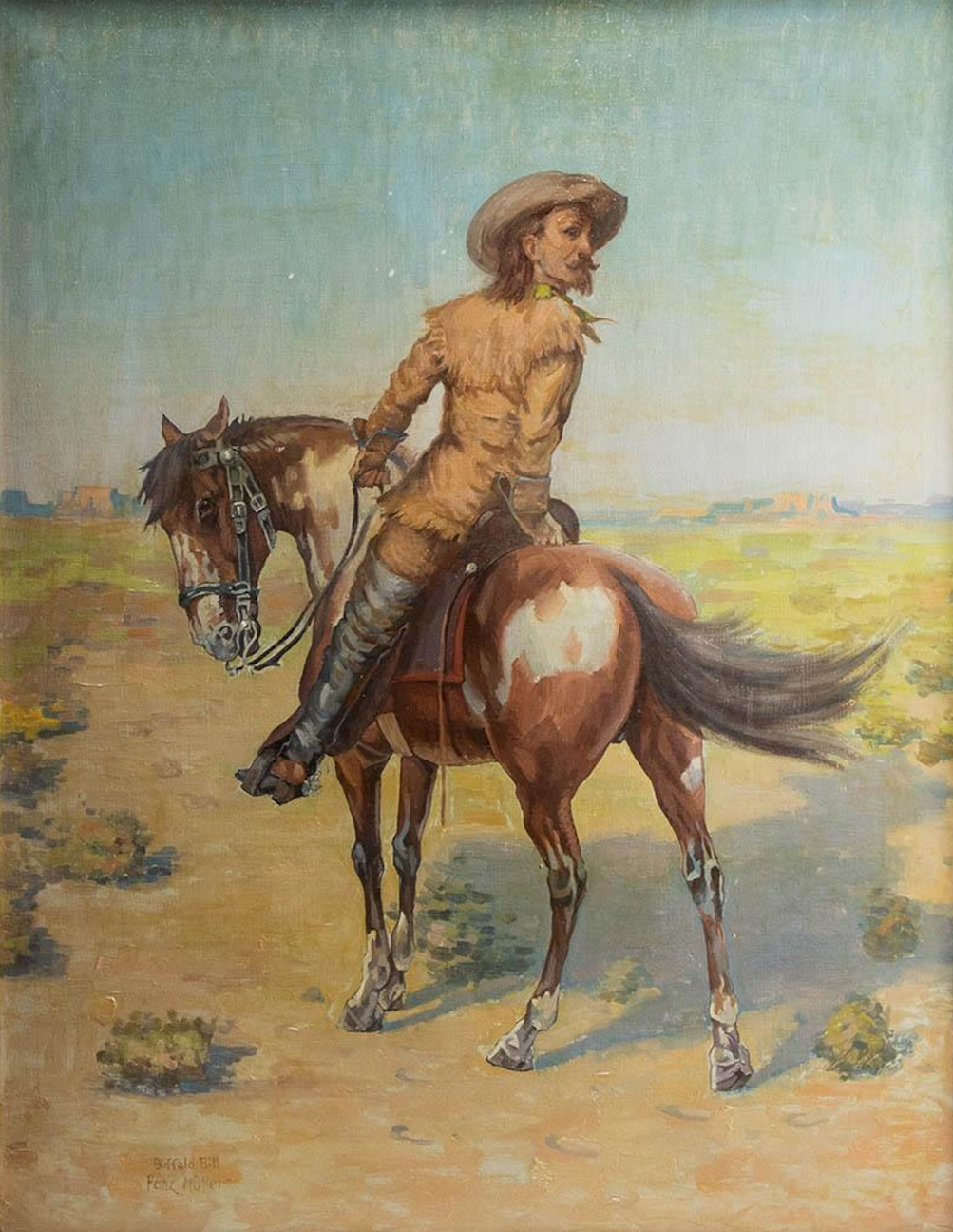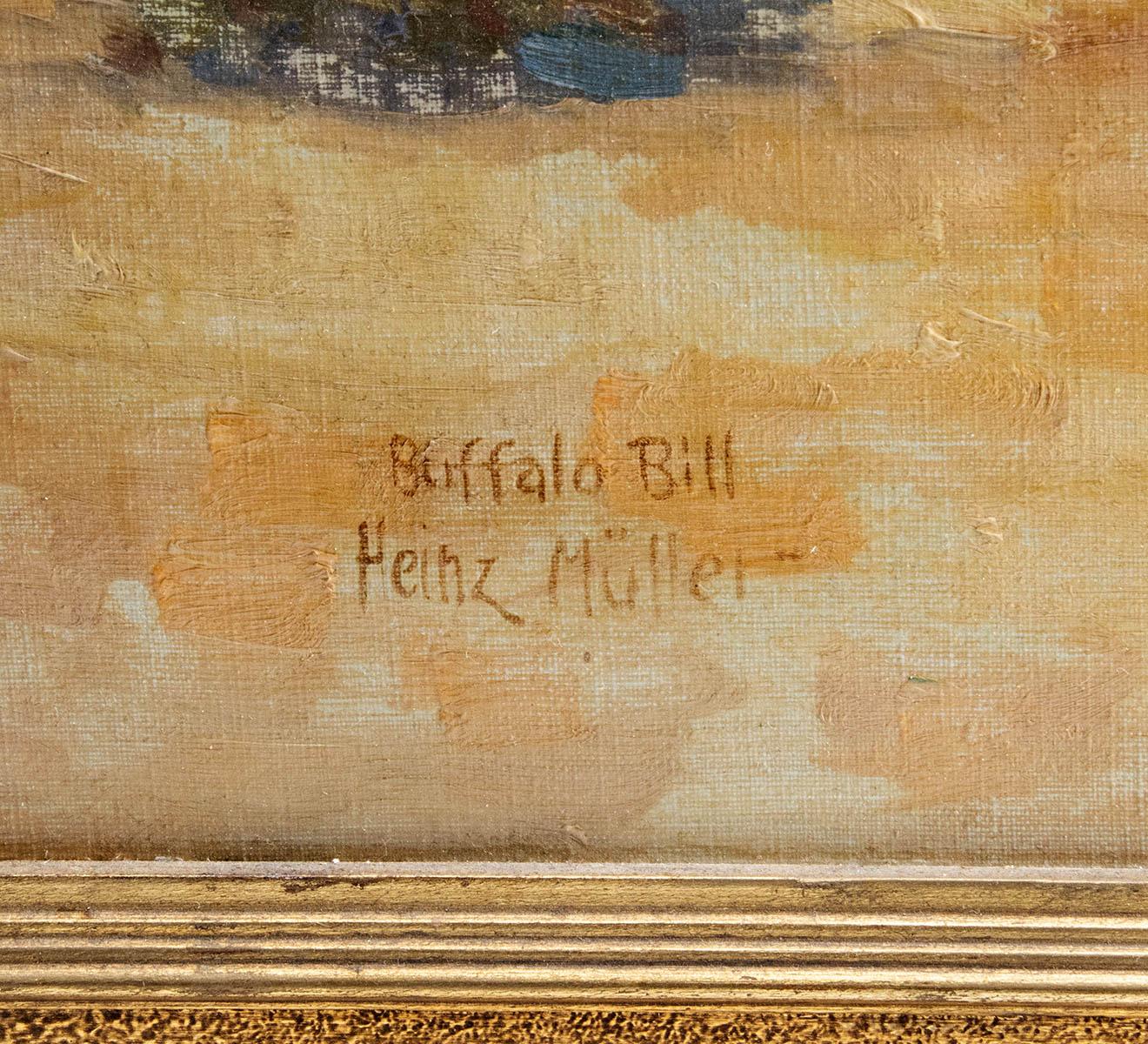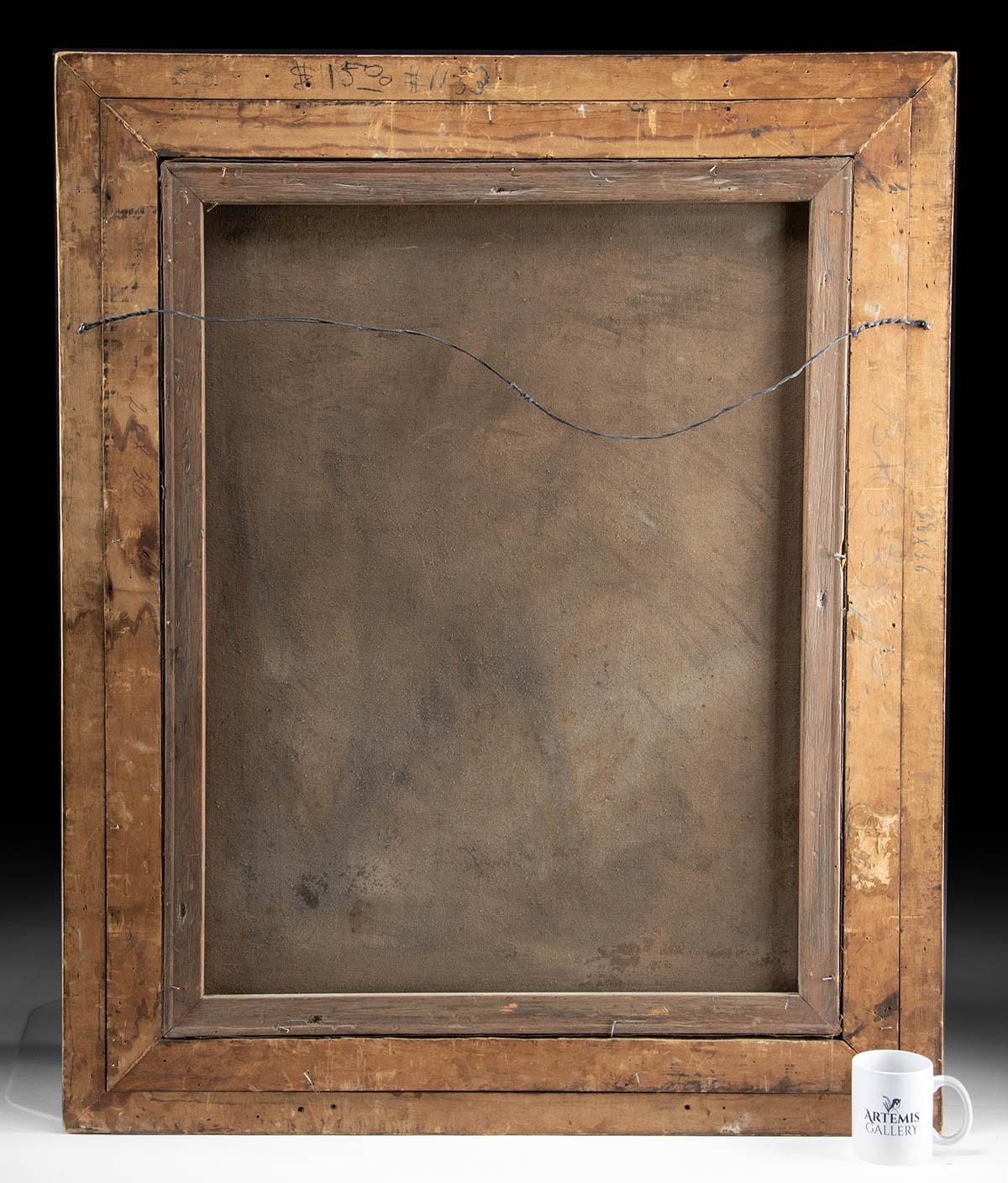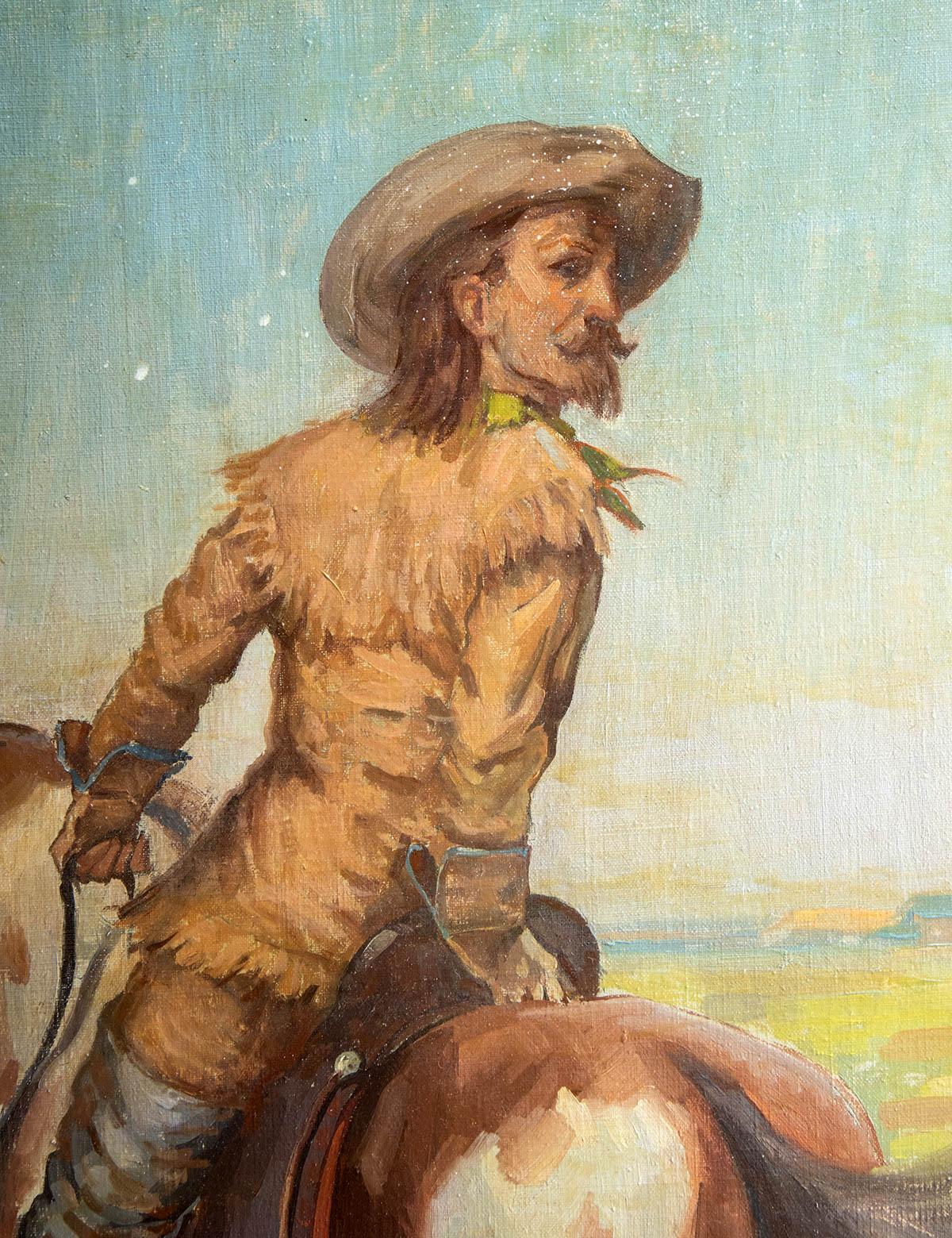Artifacts of History
Heinz Muller - Buffalo Bill 36.125" x 28.125"
Heinz Muller - Buffalo Bill 36.125" x 28.125"
Couldn't load pickup availability
Share
Heinz Müller (1872-1937)
Buffalo Bill, c. 1910
Oil on canvas
Canvas: 36.125” x 28.125”
Frame: 44.5” x 36.5”
Titled and Signed Lower Left: Buffalo Bill / Heinz Müller
A striking, large-scale painting of the legendary William Frederick "Buffalo Bill" Cody on horseback in a western landscape by German artist Heinz Müller. Buffalo Bill (1846-1917) earned this nickname for his impressive skill as a buffalo hunter, and his Wild West shows fostered a worldwide fascination with the American West. In this painting, Heinz presents Cody in classic cowboy garb - a fringed suede shirt, leather chaps over his pants, and a classic wide-brimmed hat topping his long-hair and mustachioed visage. A wonderful painting that captures the worldwide romance with the American cowboy during the late 19th to early 20th century, set in a gilt wood frame with a brass plaque engraved "Buffalo Bill by Heinz Müller".
According to the Buffalo Bill Museum, "'Buffalo Bill’s Wild West' used real cow-boys and cow-girls, recruited from ranches in the West. At first, few people shared Cody's admiration of the cow-boys. Most people regarded them as coarse cattle drivers and used the term 'cow-boy' as an insult. By the end of the 19th century, the cow-boy became the much more popular 'cowboy,' thanks in large part to the Buffalo Bill Wild West shows. The shows demonstrated bronco riding, roping, and other skills that would later become part of public rodeos."
According to Rivka Galchen's article entitled "Wild West Germany: Why do cowboys and Indians so captivate the country?" - "When Buffalo Bill Cody went to Munich in 1890 with his Wild West show, which featured two hundred cowboys and Indians, Sioux Ghost Dance performances, and reenactments of the battle of Little Bighorn with 'the people who were there!' Hopeful attendees camped out overnight to get tickets. King Ludwig attended. The arena, which seated five thousand, sold out for each of the eighteen shows. The shows were advertised in the same sorts of magazines in which Karl May was serially publishing his tales of Kara Ben Nemsi, an adventurer-at-large in the Ottoman Empire. The Winnetou and Old Shatterhand stories followed shortly thereafter."
Heinz Müller was a German artist who shared his country's fascination with the Old West. This interest originated with the writings of Karl May who wrote dozens of novels in the late 19th and early 20th century that romanticized life on the frontier, despite the fact that he never actually stepped foot in the American West. His great success was largely due to his culture's thirst for hero worship and romanticism of the western frontier. May's most beloved characters were Apache leader Winnetou and his blood brother named Old Shatterhand who was a German immigrant to the U.S. In addition, James Fenimore Cooper's "Leatherstocking Tales" which were immensely popular in both Europe and America fueled a global fascination with the American cowboy.
Provenance:
Walter Earl collection, Anchorage, Alaska, USA
Private Collection, Utah
